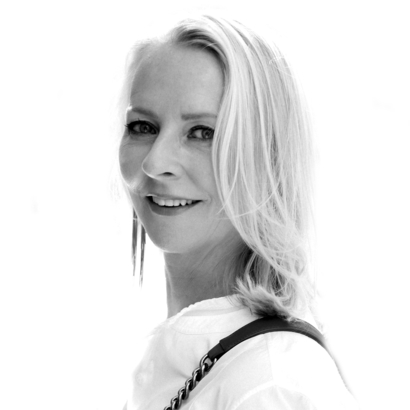This story was going to be called “The Bush Is Back” (exclamation point). But it turns out The Bush Is Back and The Bush Is Not Back.
Armpit hair is definitely Back, unless you don’t think it’s cute. Leg hair, Back, if you’re that person. Unibrows, mustaches, Back-ish. Chin hair, nose hair, ear hair: absolutely not Back.
Body hair has become yet another territory of self-expression, and the expressions are as plentiful as the hairs on Jared Leto. There are products that soften pubic hair and razors that celebrate hairiness from brows to toes, even though they’re razors. There are Instagram influencers who’ve built followings on the magnificence of their body hair. There are also perplexed waxers and clients of waxers wondering what the hell to do now.
Do you remember where you were when you first heard about the Brazilian bikini wax? I do: in a conference room on Madison Avenue when an excited editorial assistant breathlessly shared the explicit details of total hair removal. The year was 1994, and a consortium called the J. Sisters—actual sisters, all with names starting with J—had brought the concept to a salon on New York’s 57th Street from their native Brazil. Soon, they had a waiting list, a publicist, and a plotline on Sex and the City. I found a secret power in the Brazilian wax. Just by saying those two words, usually after dessert, I could bring a dinner party to life.
The obliteration of pubic hair coincided with the rise in spray tans, hair extensions, and thongs—evidence that strippers and porn stars had become aesthetic role models. It didn’t take long before the alarming became normalized. Never mind strippers and porn stars; even pregnant women made a ritual of getting Brazilians before giving birth.
Now it’s hairiness that’s causing shock. Just ask the founders of Fur, which started with a stylish, anti-bacterial, anti-microbial, anti-inflammatory oil that softens body hair and inhibits ingrowns. To introduce Fur Oil to the world, the founders plastered downtown New York and parts of Brooklyn with posters showing pubic hair emerging from one model’s bikini bottom and armpit hair in full glory on another.
I found a secret power in the Brazilian wax. Just by saying those two words, usually after dessert, I could bring a dinner party to life.
Some passersby were less than enchanted. “People would go in art stores and buy paint and tape to write on top of the ads—that took a lot of energy and money! ” says Lillian Tung, a Fur co-founder. “I’ll take a negative reaction over a tepid one any day.”
Negative reactions were no problem at all. Prospective formulators hung up on them as soon as they uttered the words “pubic hair.” Trade shows, members of the media, and retailers tsk-tsked, telling them that their product was “too risqué, too blue, too disgusting,” says Tung.

Their big break came when Emma Watson told beauty blog Into the Gloss that she used Fur Oil “anywhere from the ends of my hair to my eyebrows to my pubic hair.” And there’s nothing risqué, blue, or disgusting about Emma Watson. “That was our magical moment,” says co-founder Laura Schubert. “We sold out two years of inventory in three weeks.”
It was images more than language that Billie razors used to cause a stir: Leg fuzz, pit fluff, toe sprouts, unibrow thatch, middle-of-the-abs fur, and a shadow of pubic hair under a pair of granny panties (but not on a granny). Its founders are on a mission to remove the shame and stigma of body hair, which was the implicit message when razors were first advertised to women in 1915.
“Body hair was so unseemly that they wouldn’t show it,” says Georgina Gooley, a co-founder of Billie. “They demonstrated their razors on legs and underarms that were already hairless and shaved. It was ridiculous.”
The Billie images are so matter-of-fact that they’re almost subversive. “We were selling a razor, but we didn’t want to sell it on the backs of having women feel shame about their body hair,” she adds.
Billie started Project Body Hair, a video series that celebrates underarm hair, pubic hair, and more. In one, a model takes a comb to her mustache. “That might have been the most taboo of all,” says Gooley.
And yet, the people who are flashing their body hair today seem less interested in transgression than in personal comfort. Razor sales have seen a steady decline since 2015, according to Mintel, a market research firm. “Younger consumers are taking a way more relaxed approach to grooming routines,” says Olivia Guinaugh, the senior beauty-and-personal-care analyst at Mintel. “People are feeling less pressure to have a perfectly hairless body.”
Tonya, who’s studying for her Ph.D. in clinical psychology, tells me that she stopped shaving her underarms two years ago. “I have a bush, but I shave my calves, so I haven’t rejected all mainstream beauty standards. I just started asking myself, Who am I doing this for?”
Savannah Scott, who works at Supergreat, the beauty-review app, says she shaves her legs “sometimes, but I don’t shave my pubes.” She says that her colleague Eliza “lets her armpits grow but gets a laser for her pubes.” Scott turns and says, “Sorry, Eliza, I’m telling everyone about your situation....There’s nothing private.” And maybe that’s also the story: nothing at all is private.
So, there’s hair here and there. The bush is back and it’s not. And those who are more conventional in their grooming habits are puzzled. “They don’t know what to do,” says Lidia Tivichi, owner of the Maris Dusan salon, in New York City, and waxer extraordinaire. “They question me: ‘Lidia, do I do Brazilian? Semi?’…They want to know if other women are taking it all off or not.” When I ask her if her clients are letting their underarm hair grow, she lets out a big laugh and says, “Noooooo. No. No. No.”
Some of them still have hairy legs, perhaps a vestige of the coronavirus lockdown. “I just keep my mouth shut,” says Tivichi. “I tell them, ‘Do what makes you feel good.’”
Linda Wells spent 25 years as Allure magazine’s founding editor in chief, served as Revlon’s chief creative officer, and currently consults and sits on the boards of several beauty and apparel companies


